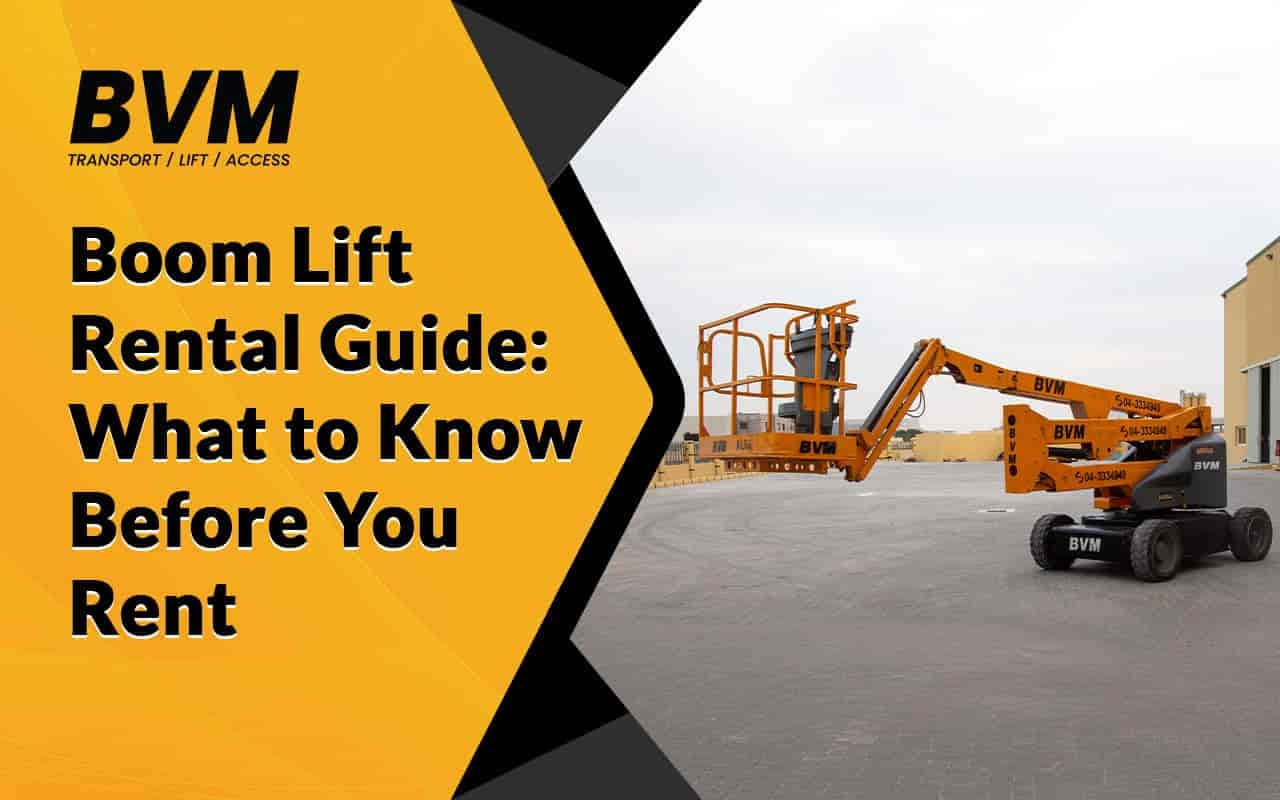Renting a boom lift can be a game-changer for various projects, from construction to maintenance.
These versatile machines offer access to hard-to-reach places, ensuring tasks are completed efficiently and safely. Before diving into the rental process, it’s essential to understand the different types of boom lifts, their uses, safety protocols, and other critical considerations.
This guide will walk you through everything you need to know about renting a boom lift, helping you make an informed decision.
What is a Boom Lift?
A boom lift is a type of aerial platform that allows workers to reach elevated areas safely. It consists of a platform or bucket at the end of a hydraulic arm, which can extend both vertically and horizontally. Boom lifts are often used in construction, maintenance, and industrial settings to access high places that would otherwise be difficult or dangerous to reach with ladders or scaffolding.
Types of Boom Lifts
Boom lifts come in several varieties, each suited to different tasks and environments:
- Telescopic Boom Lifts:
- Also known as stick booms, these lifts have a straight arm that can extend up to 120 feet horizontally. They are ideal for jobs requiring long reach and stable, straight-line access, such as bridge work or outdoor construction.
- Articulating Boom Lifts:
- These lifts have multiple jointed sections, allowing the arm to bend and reach over obstacles. They are perfect for tasks in confined spaces or areas with many obstructions, like industrial sites or indoor maintenance.
- Trailer-Mounted Boom Lifts:
- Also known as towable lifts, these are mounted on a trailer and can be easily transported. They are cost-effective for moving between job sites and require minimal maintenance compared to other boom lifts.

Key Considerations When Renting a Boom Lift
1. Project Requirements
Evaluate the specific needs of your project:
- Height and Reach: Determine the maximum height and reach required.
- Terrain: Consider whether the work area is indoors, outdoors, or features rough terrain.
- Obstacles: Identify any barriers that may require an articulating boom lift for maneuverability.
2. Power Source
Boom lifts can be powered by different sources:
- Electric: Ideal for indoor use where ventilation might be a concern.
- Diesel: Suitable for outdoor use, providing more power and higher reach capabilities.
- Hybrid: Offers flexibility for both indoor and outdoor use.
3. Weight Capacity
Ensure the boom lift can handle the weight of the operators and any tools or materials that will be used. Overloading a lift can be dangerous and may cause equipment failure.
4. Rental Duration and Cost
Plan the rental period to ensure cost-efficiency. Rates can vary significantly based on daily, weekly, or monthly rentals. It’s advisable to get quotes from multiple suppliers to compare prices and services.
Safety Tips for Operating a Boom Lift
Operating a boom lift requires strict adherence to safety protocols to prevent accidents and injuries:
- Training and Certification
-
Make sure all operators are properly trained and certified to use the equipment. This includes understanding the lift’s controls, capabilities, and safety features.
-
- Inspection and Maintenance
- Conduct thorough inspections of the boom lift before each use. Check for any signs of wear or damage, and ensure that all safety devices are functioning correctly.
- Safety Harnesses
- Operators should always wear a safety harness and attach it to the anchor points on the platform. This provides an extra layer of protection in case of a fall.
- Weather Conditions
- Avoid operating the boom lift in extreme weather conditions, especially high winds, which can destabilize the platform.
- Clear the Area
- Ensure the area around the base of the boom lift is clear of personnel and obstacles to prevent accidents from falling objects.
- Follow Manufacturer Guidelines
- Adhere to the manufacturer’s guidelines regarding load limits, operational procedures, and safety protocols.
Common Questions About Boom Lift Rentals
1. How Do I Know the Lift Will Work Properly?
Most rental companies guarantee that their equipment will function as expected. It’s essential to ask about the maintenance history and any service agreements that cover repairs during the rental period.
2. What Happens If the Lift Breaks Down?
Rental companies usually handle repairs and maintenance. They may send a technician to fix minor issues on-site or replace the equipment if extensive repairs are needed.
3. How Soon Can a Boom Lift Be Delivered?
Delivery times can vary, but most companies can provide a boom lift within a few days. It’s advisable to book in advance, especially for busy construction seasons.
Choosing the Right Boom Lift for Your Project
When choosing the right boom lift, consider factors like the required height and reach, the terrain type, and the specific work being done. For straightforward vertical access, a telescopic boom lift may be the best choice. For more complex tasks involving obstacles, an articulating boom lift provides greater flexibility. Always consult with experts or rental company representatives to ensure you select the right equipment for your needs.
Conclusion
Renting a boom lift can significantly enhance the efficiency and safety of your project. By understanding the different types of boom lifts, evaluating your project requirements, and adhering to safety protocols, you can ensure a successful and accident-free operation. Whether you’re working on a construction site, performing maintenance, or completing an industrial task, a boom lift is an invaluable tool that can help you reach new heights.
Remember, planning and preparation are key. Assess your needs carefully, choose the right equipment, and follow safety guidelines to make the most of your boom lift rental.